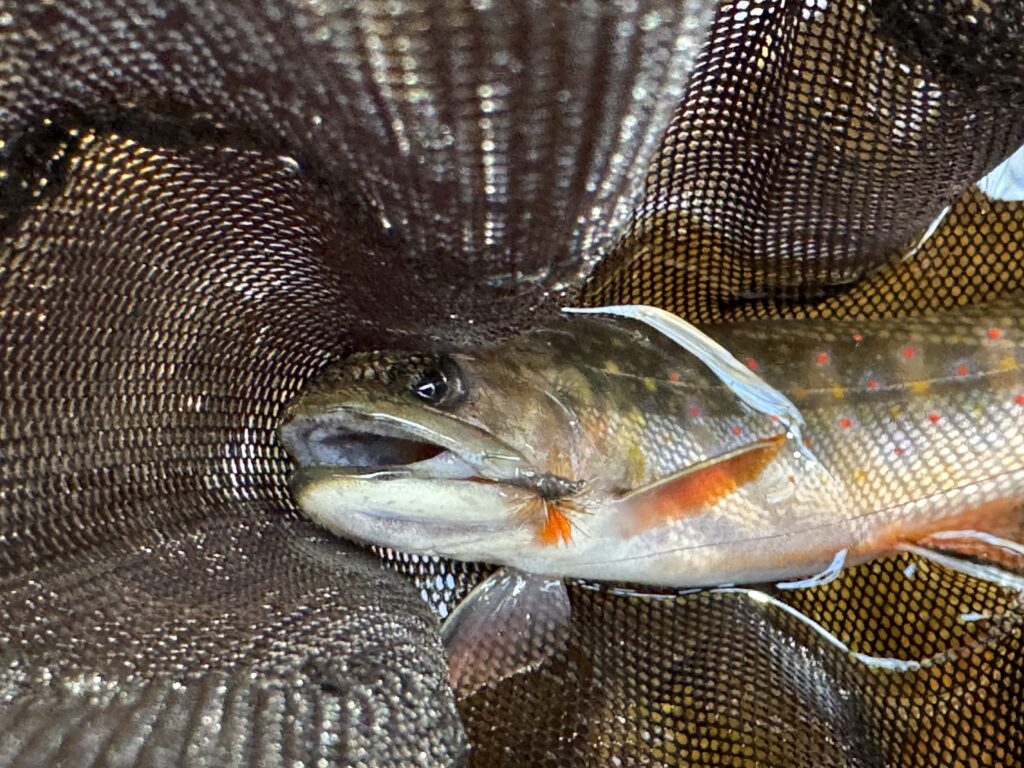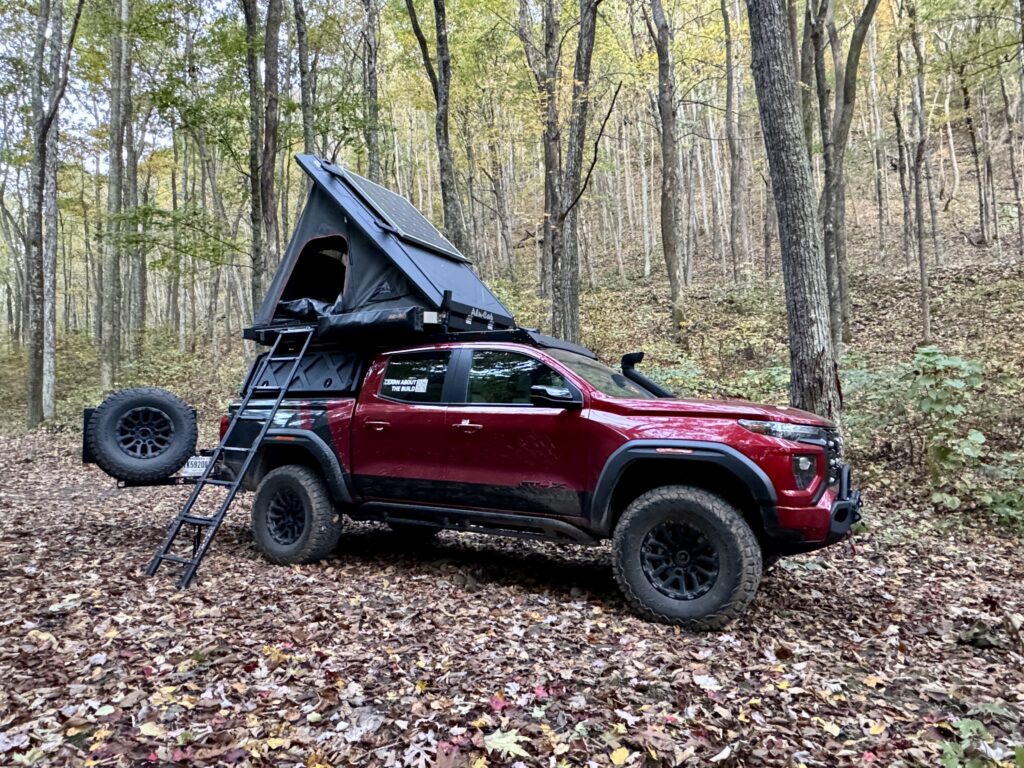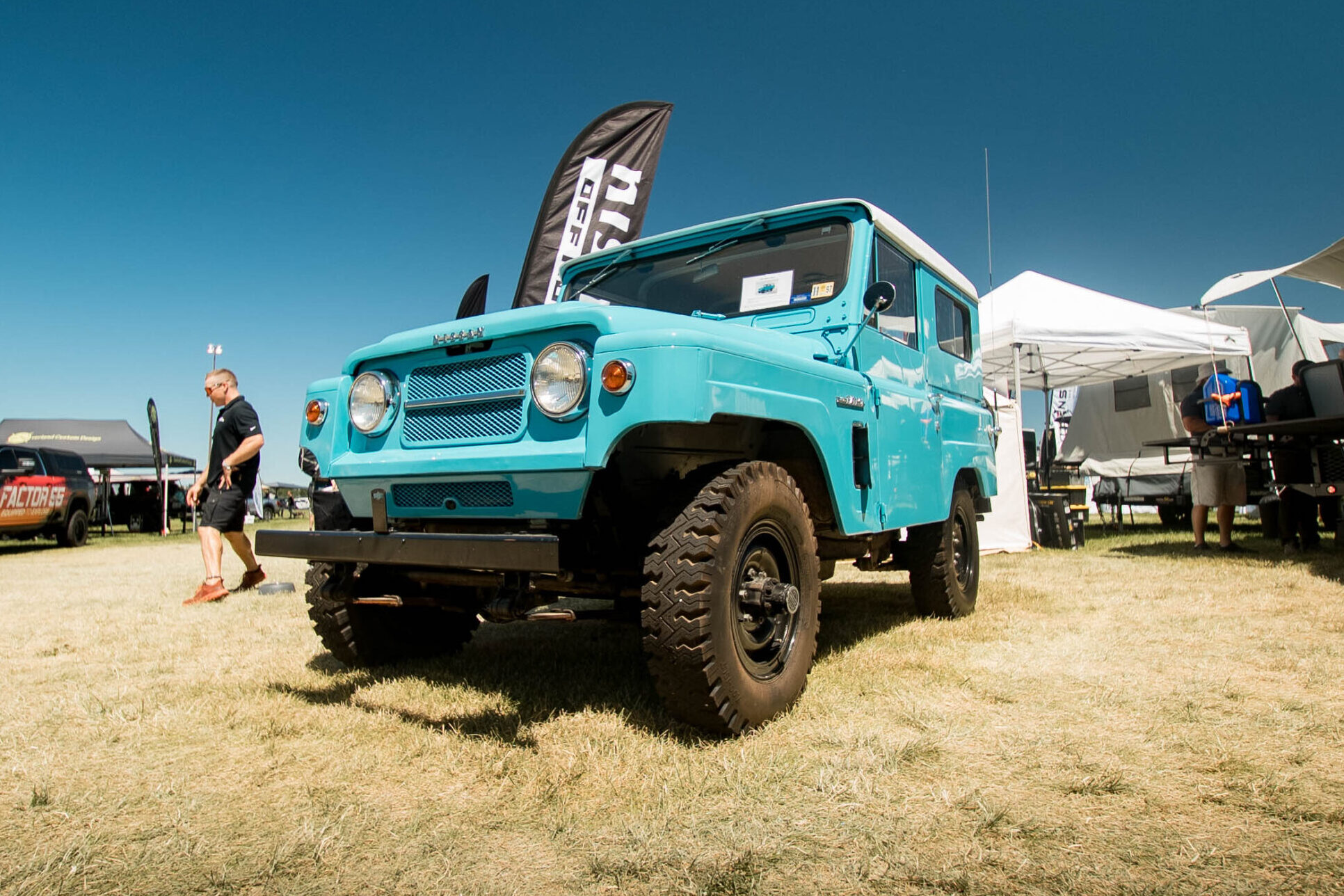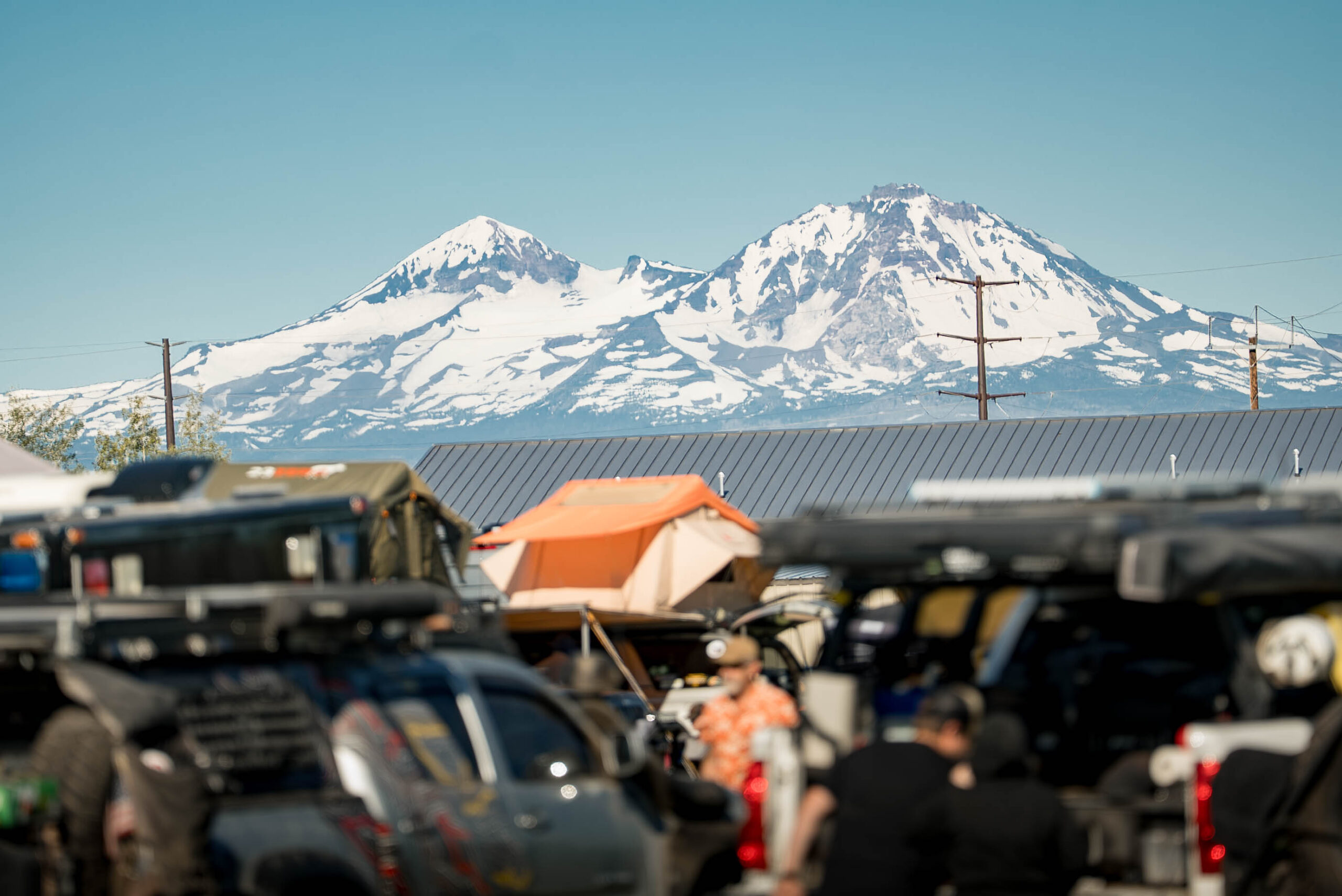After wrapping up the last event of the year at Overland Expo East, I immediately turned my attention to one of my favorite fall adventures, fishing the streams of the Blue Ridge Mountains for native brook trout. As the leaves begin to change and a chill is in the air, I seek out those thin blue lines on the map. To me, it’s just like making your way down a deserted two-track in the middle of nowhere. There’s excitement around every turn, and while there are plenty of trails and trout streams, no two are exactly the same.

It might not be common knowledge to most of our readers, but tucked between the mountains near Overland Expo East, you can find cold mountain streams full of hungry trout and excellent camping within feet of the water. Many of these streams are unassuming, and they often flow through some of the steepest rugged valleys hidden by the surrounding ridges. A few friends and I decided to take advantage of the wonderful October weather right after the event and spend some time casting on a few of our favorite streams. With my phone firmly locked into the Quad Lock mount, we headed towards a spot that I knew offered some great camping and a good chance that we would catch some fish. Just like I map trails and forest roads, I mark waypoints on nearly every stream I fish. Having this info handy helps me plan camping, routes, and even where I’ll enter and exit the stream.

The Quad Lock case and mount combo makes it easy to navigate to camp.

The Quadlock also offers flexibile charging options.


Before hitting the stream, I used the Bluetti AC200L to make sure all of my electronics were charged. Spending a full day flyfishing doesn’t require a ton of gear, but when you’re hiking miles from the truck, sometimes totally off-trail, reliable navigation, a satellite communicator like the ZOLEO, and a headlamp just in case you’re not back to camp by dark are all very good ideas. It’s easy to get caught up in the fishing and not realize the sun is setting in the next few minutes, and of course, an emergency could force you to be out later than expected, so it’s best to go prepared. That’s why I always ensure that navigation, communication, and illumination are squared away before leaving the truck.
With camp set up, we grabbed our gear and headed downstream, intending to fish our way back to the trucks. A gated forest road provided the quickest route, and after we had walked about a mile, we stepped off of the two-track and took the easiest route we could find to the water. This particular stream, like many in the area, descends quickly from one pool to another, and it can only be described as a canyon. The sides are steep, and you just keep heading towards the sound of running water.



Once on the water, we planned to fish together for a while before splitting off individually. This helps us test what flies the trout are interested in faster since we can all fish something different until we hone in on what’s getting the most attention. On this day, and for the majority of the weekend, the answer was grey Parachute Adams. This was surprising because nearly all of the actual bugs we saw on the water were very pale yellow or tiny gnat-sized flies. But we don’t make the rules, so within thirty minutes, we all tied a Parachute Adams fly onto the end of our lines and continued to get brook trout to the net.
READ MORE: Overland Expo is Heading to California
These trout are by no means huge, but they’re formidable predators in their habitat. They ambush bugs of all varieties from their hiding spots under rocks or hang in the current and eat whatever comes downstream. Beyond this relative ferocity, and I mean ferocity because they absolutely hammer flies that hit the water’s surface, they also withstand tough conditions in these mountain streams. It’s not unusual for these watersheds to go from drought conditions where oxygenated water is scarce to roaring torrents after thunderstorms or tropical storms. And, of course, they have to keep an eye out for otters, herons, kingfishers, and other predators hoping for a meal.

After a successful day on the water, we spent the night in camp and headed back out for a full day of fishing even further downstream. Admittedly, I’m always a bit worried about leaving a rig within sight of a popular forest road, especially when I’m going to be gone for hours. It’s an unfortunate fact of life that dishonest people will take advantage of situations and carry off whatever catches their eye on occasion. With a rig that’s well outfitted, it’s bound to stand out, and it’s loaded down with equipment. While I still lock everything up before leaving for the day, it’s nice to know that the Tredder insurance policy is there, not only for accidents but also for theft, and it covers the equipment and modifications on the Canyon.

This second day on the water was just like the first, but this time, we fished solo, spread out across a couple of miles of stream. We stayed in touch at the top of the hour via two-way radio, but for the most part, it was just me, my thoughts, and the stream. I pondered how much things change over a few short weeks. Three weeks before this trip, we were planning the final Overland Expo of 2024, and summer was still holding on. Hurricane Helene had dropped recording-breaking amounts of rain on this area, and undoubtedly, this stream would have been a raging torrent. Twenty odd days later, the water flowed forever towards the Atlantic but at a much more relaxed pace, and the brook trout were feeding voraciously in preparation for their spawning season.
Back at the truck, we shared another meal, but more importantly, to three trout fishermen, we shared stories from the day. The conversation wasn’t just about the fish we had caught but also about those we had missed, sights along the stream, and plans for future trips. The next morning we packed up and got back on the route home, but not without stealing glances at the roadside stream and wishing that we had more time to cover more ground.

Pro Tip: Your waders and boots will undoubtedly drain out water post-fishing, so be careful throwing them into your bag or seat. I like to let my boots and waders air out on the drive home versus packing them away in a bag or case. This prevents them from growing any stinky funk, and with the Husky Liners holding a shocking amount of water I don’t have to worry about anything else getting wet on the drive home.
This trip wrapped up my Fall trout fishing, and it was my last trip with the GMC Canyon AT4X. As we close out the year, I find myself restocking the fly box, planning some future trips, and looking forward to the 2025 Ultimate Overland Build.


